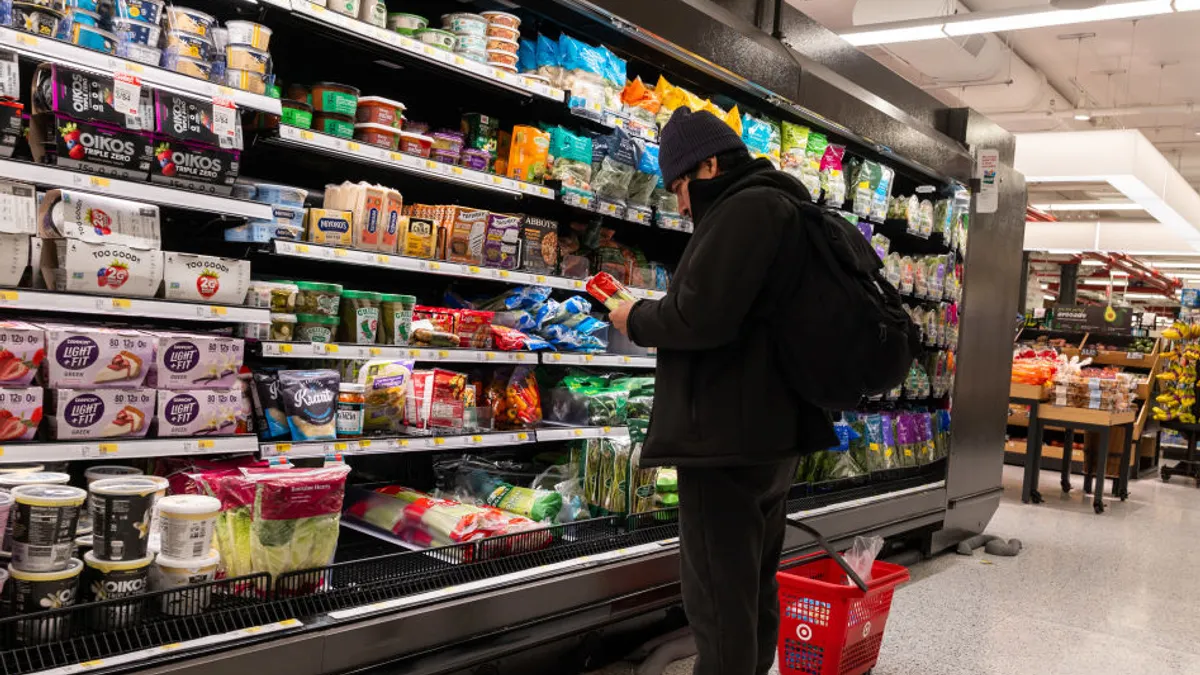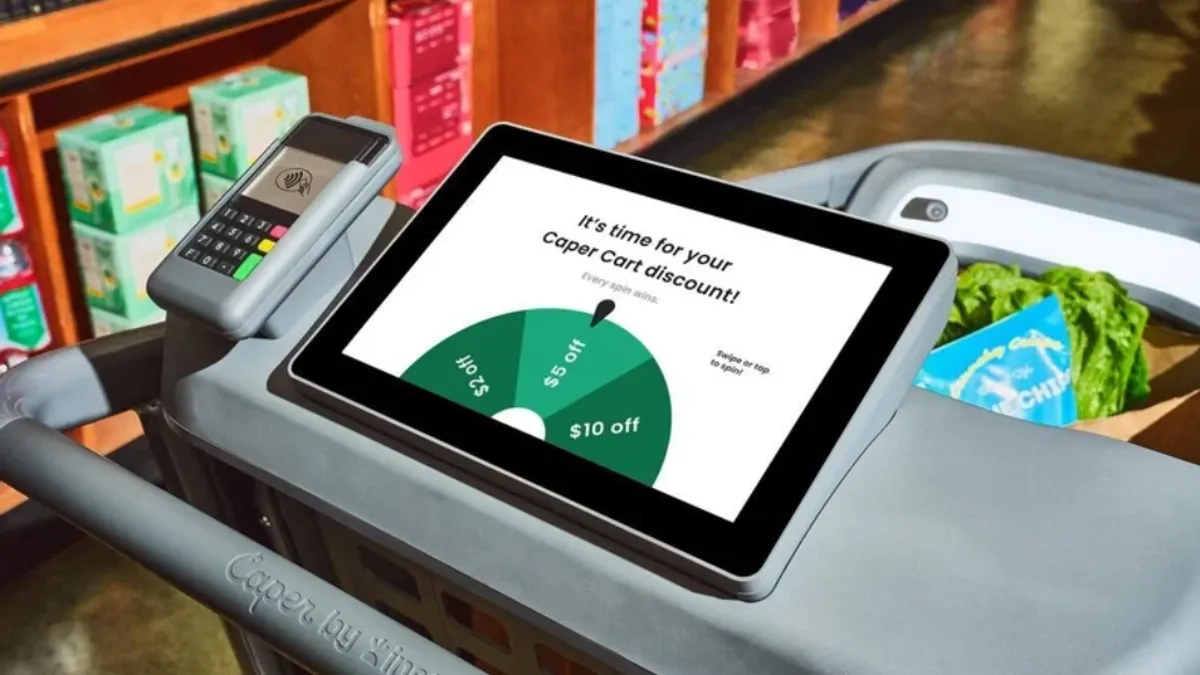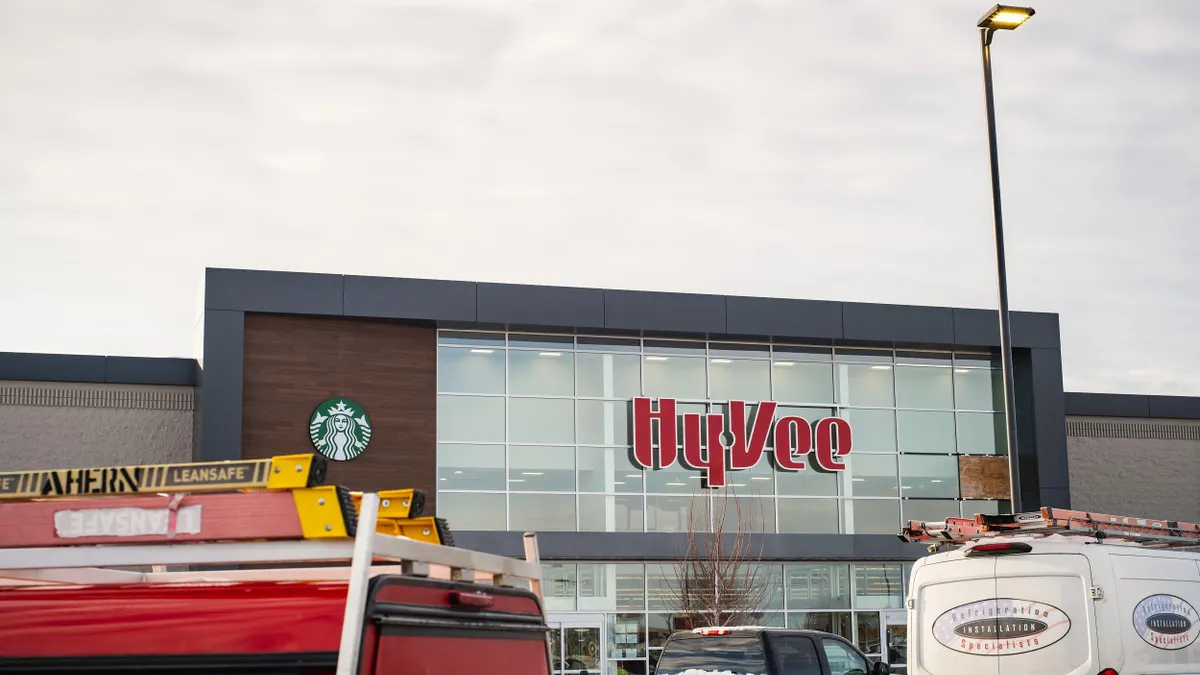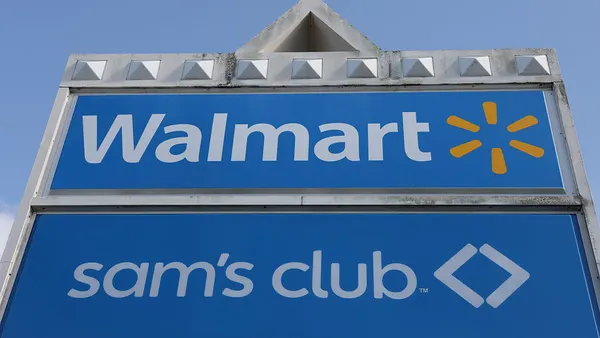For Schnuck Markets’ corporate team, the decision to bring electronic shelf labels into stores stemmed from firsthand experience.
The grocer’s corporate technology staff routinely spends time working as store associates in stores in order to understand the company’s day-to-day needs. During one recent exercise, they realized how arduous the process of hanging shelf labels throughout stores turned out to be.
“We realized how much it sucked,” Dave Steck, vice president of IT infrastructure and application development at Schnuck Markets, recounted to grocery industry attendees at a Groceryshop session in September.
Now, the Midwestern grocery chain is intent on expanding electronic shelf labels (ESLs) across all of its stores as not just a way to free up associates for other tasks, but also to boost operational efficiencies and tap into new retail media offerings.
Schnucks is not alone in the endeavor. Several other grocers have also turned to ESLs for pilots or fleet-wide deployments, including Kroger, Hy-Vee and Chicago startup Dom's Kitchen & Market. Ahold Delhaize USA is piloting ESLs at undisclosed locations with hopes of scaling the technology.
With the price tags for electronic shelf labels dropping in recent years and labor costs simultaneously rising, grocery industry sources said they expect to see the technology scale quickly. At the same time, vendors said they are working to overcome battery life constraints and network connectivity issues with new device models, making the technology more reliable and consistent.
ESLs can give retailers a better view of pricing data, inventory and out-of-stocks, said Anne Mezzenga, a Target veteran and co-CEO of retail blog Omni Talk, and could ultimately help inform retailers’ retail media efforts.
“They tackle the big issue of changing prices and the loss that grocery retailers can experience when they don’t have accurate pricing on shelf,” Mezzenga said.
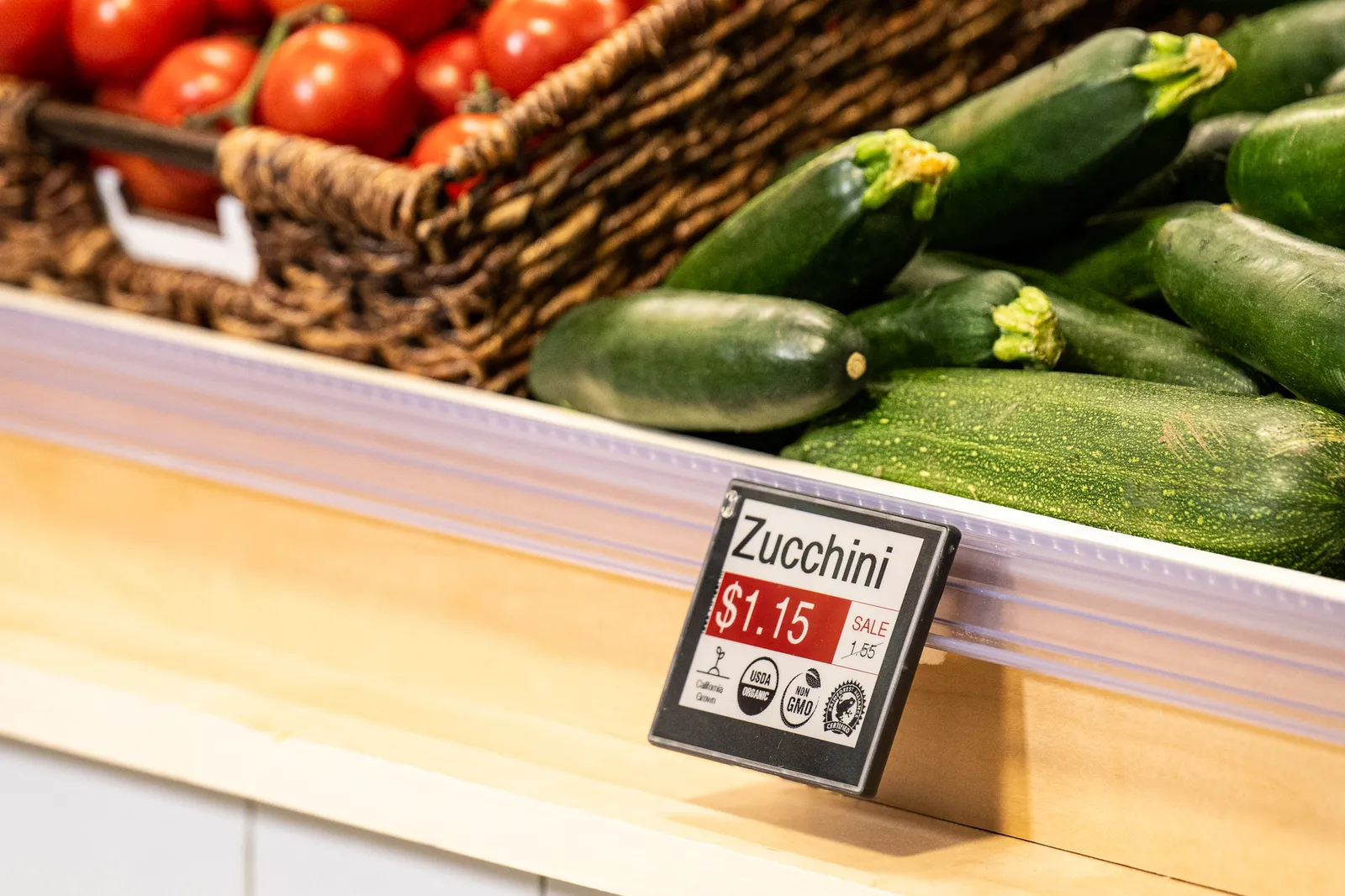
Boosting store operations and labor efficiencies
At Schnucks’ stores without electronic shelf labels, workers replace thousands of tags each week. “It’s a lot of labor to do very little,” Steck said at Groceryshop.
Schnucks, which currently has ESLs installed at a handful of stores currently, is working toward a chainwide deployment of Hanshow’s digital tags within two years. The company sees a roadmap of possibilities for what the tags can unlock, Steck and Bob Hardester, the grocer’s senior vice president, chief information officer and chief supply chain officer, said in a joint interview.
“The store teams [with ESLs] absolutely love it,” Steck told Grocery Dive.
Hanshow and SES-imagotag are the two ESL providers linked with Instacart’s Carrot Tag software, which has pick-to-light capabilities for Instacart workers.
ESLs can make stocking and e-commerce fulfillment faster and more efficient. Tags with LED lights on them can flash for pick-to-light and stock-to-light functionalities, helping people locate products more quickly, sources said. Solum’s Newton tag, for example, has seven LED lights, which workers could use to fulfill seven orders by assigning a different color to each one, said James (Hyunseok) Jeong, a business manager with Solum.
In addition, Solum’s Newton tag lets shoppers use their smartphones to communicate with the ESL, allowing them to more easily access and download digital deals in-store, said Jeong.
Instacart’s Carrot Tags also use lights to help people to find products and display key product information, such as whether an item is gluten-free, organic, kosher or EBT SNAP-eligible.
For products with multiple facings, using the flashing LEDs coupled with inventory management insights can make it faster for store workers or shoppers to find or put away items, Hardester said. In three stores, Schnucks has reserved two of the seven ESL’s LED colors for pick-to-light functionality for Instacart workers to pick online orders, he said.
For out-of-stocks, “you could give them a QR code to scan [on the tag] if they'd like to know when the product is back at the store,” Hardester said. Schnucks has already connected its ESLs to its shelf-scanning Simbe robots, which are deployed fleet-wide.
“If an item is out on the shelf and we know that that item is not in the store, we should flip [the tag to say] it to ‘temporarily out’ and that drives down customer questions, because even though they see an empty shelf, if it’s a traditional paper tag, the customer is still going to ask the teammate, ‘Well do you have this in the backroom?’” Steck said.
ESL makers Solum and Pricer both note that their tags can have different “pages” for a single product. For example, the tags could display stocking levels in the early morning hours when workers are stocking levels, then switch to consumer-facing pricing and other information during operating hours.
Good Food Holdings, which runs grocery stores along the West Coast under banners including Metropolitan Market, Bristol Farms, Lazy Acres, New Seasons Market, also sees benefits in using ESLs to guide people to products in its stores, said CEO Neil Stern.
The retailer has added ESLs from SES-imagotag equipped with Carrot Tag capabilities to some shelves in a Bristol Farms store in Irvine, California, as part of Instacart’s Connected Stores program, Stern said. Good Food Holdings also have ESLs from SES-imagotag at a Metropolitan Market location in Seattle, he added.
While the labor savings offered by ESLs were noteworthy, Stern said those benefits alone weren’t strong enough to convince him to move ahead with the technology. But now that ESLs have evolved to the point that they can operate in combination with other pricing tools, serve as beacons for consumers and Instacart shoppers, and help with out-of-stock monitoring they are considerably more compelling, he said.
“You can envision a future where if I'm a shopper and I want gluten-free products, for example, I can have the shelf tags light up and just show me gluten-free. That's an advanced capability,” Stern said.
For dark store operations, ESLs can help provide insight into where products are located and what their stock levels are, said Robert Willcox, a vice president with digital shelf tag company Pricer and a former Whole Foods Market IT executive.
ESLs also can tie into sustainability efforts by eliminating the need to print out tags and shelf talkers, Mezzenga said. To cut down on food waste, Schnucks is using ESLs for markdowns for products nearing their expiration date, Hardester said.
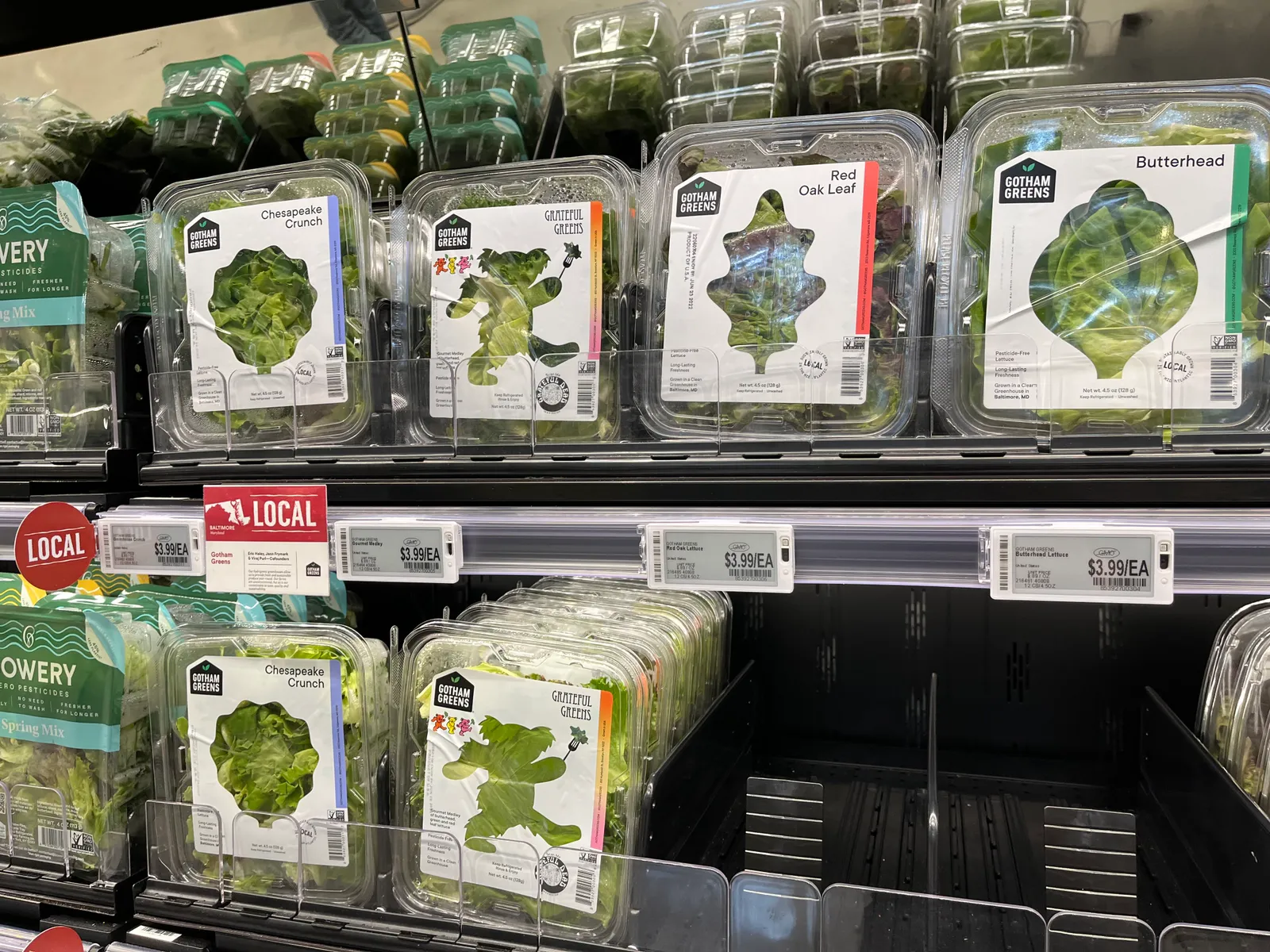
Unlocking new merchandising and marketing options
Neil Saunders, managing director of GlobalData Retail, said a key advantage of ESLs is that they can help retailers assure digitally savvy consumers that the prices displayed on their shelves are always up to date.
“What [can be] really frustrating for consumers is that the price that you're paying at the register is not the same as what the shelf label says because they've not got round to updating that shelf label, and it happens a lot,” Saunders said. “So obviously the electronic shelf-edge labels would give people the right price, which I think is a real advantage.”
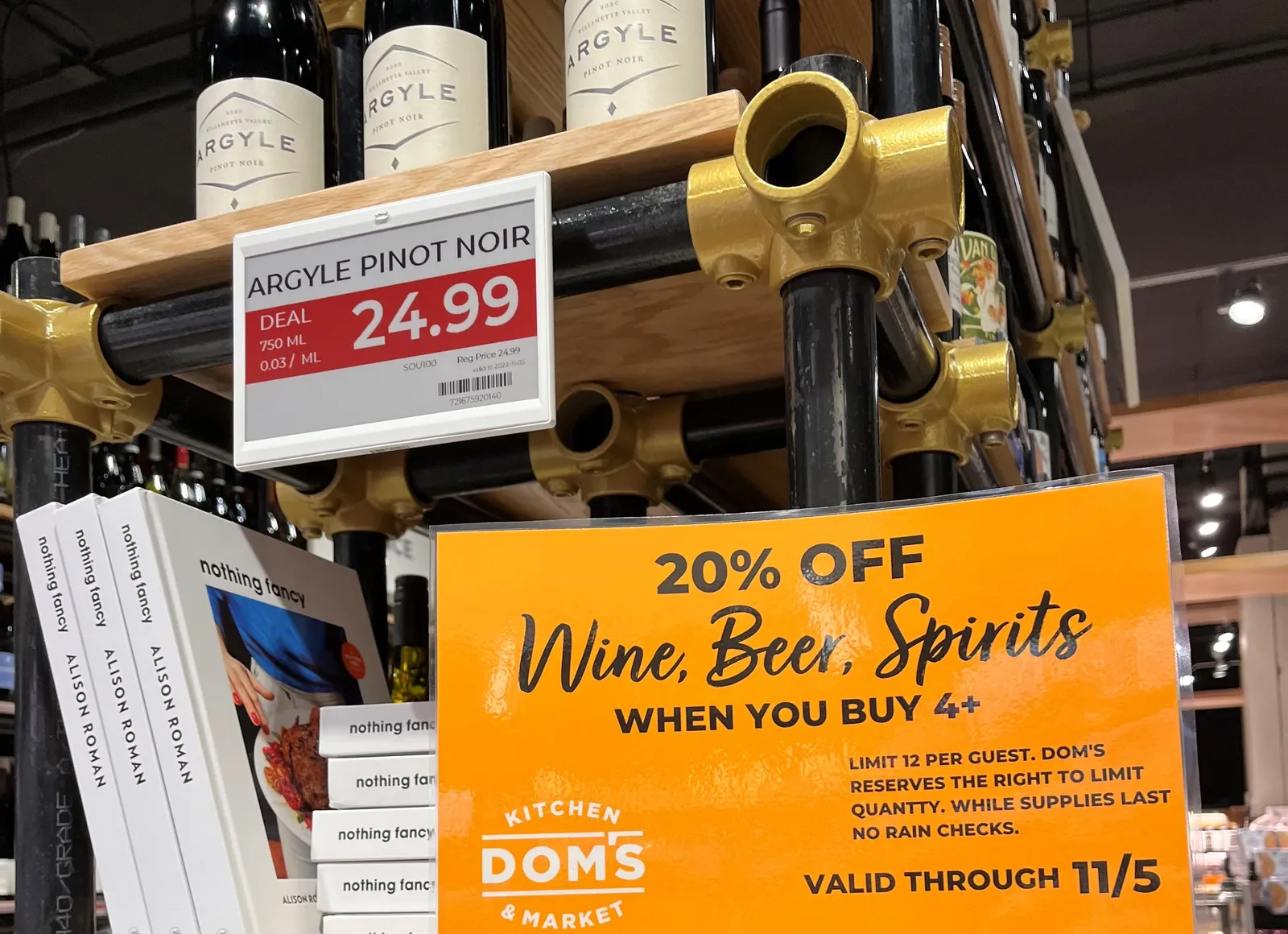
Grocers are particularly susceptible to the possibility that a price on paper shelf tag might be out of date because they have so many SKUs, Saunders said. The risk of putting off a customer is heightened by the fact that people often buy so many products on a trip to the supermarket that they are unlikely to be able to recall the cost of every item when reaching the checkout counter.
The Schnucks executives said ESLs make it easier to have daypart pricing, such as offering specials during rush hour. “You don't have to follow your traditional ad cycles,” Hardester said, noting Friday Specials and daily happy hour deals become more feasible.
Schnucks is also planning to link ESLs with smart carts in the future for in-store navigation with the LEDs, Hardester said.
“Your thinking has to go well beyond replacing a paper tag with an electronic tag. Your thinking has to go: How do I build this into my overall digital ecosystem and make this powerful for my customers, my CPGs, my merchants, my operators, my marketing?” Hardester said.
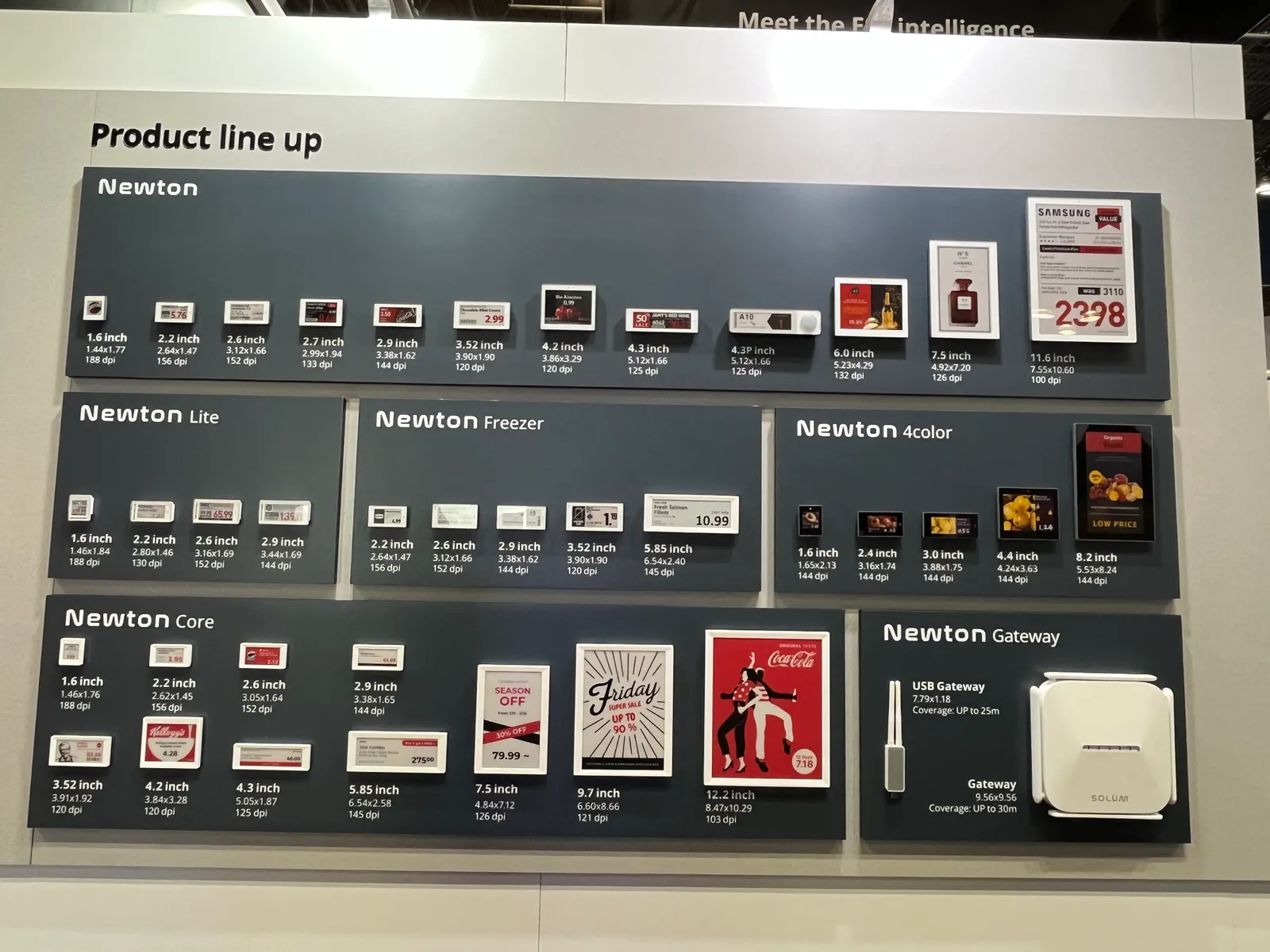
ESLs are no longer just boring black-and-white digital screens. Some vendors’ efforts to expand the number of on-screen colors on their tags can provide even more aesthetic opportunities for grocers to use for marketing.
Vendors with booths at the National Retail Federation’s conference in New York in January showed off tags in a variety of sizes. For example, a retailer may opt for a larger tag on an end-cap to make it more prominent or style information about deals in black text against a red stripe.
Taking promotional opportunities a step further, grocers can tie cameras and sensors to ESLs to gather insight into real-time purchasing decisions at the physical shelf and then use that data under a retail media business to give CPGs a better understanding of offline shopping behavior, Mezzenga said.
“If you’re a retailer and you aren’t looking at them yet, you should be,” Steck said about ESLs at Groceryshop.










